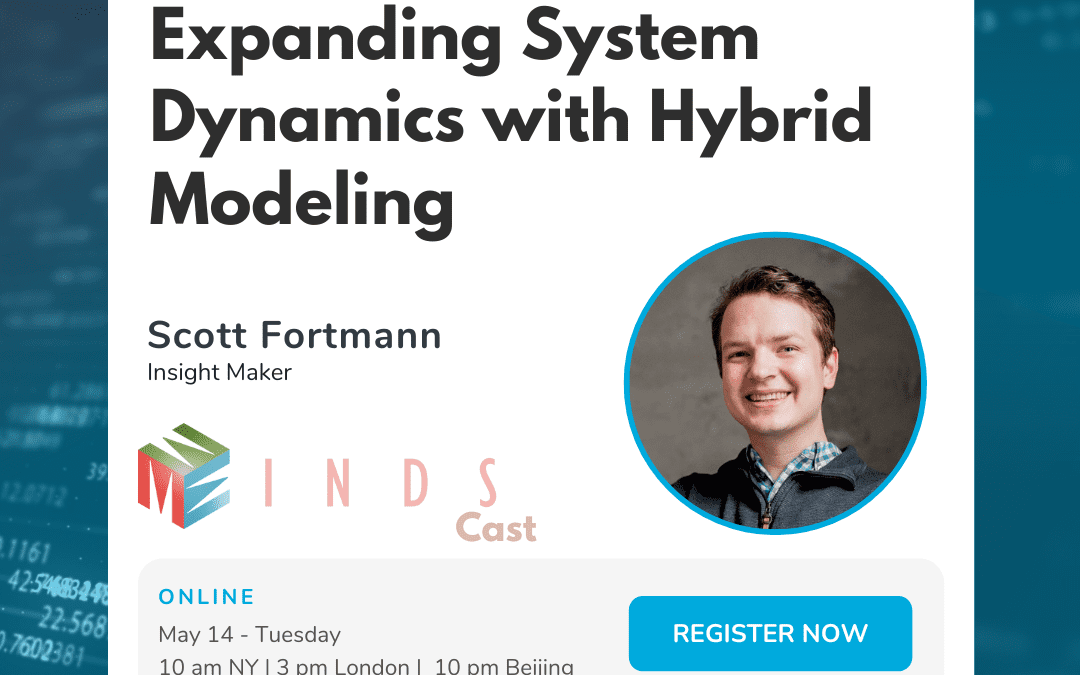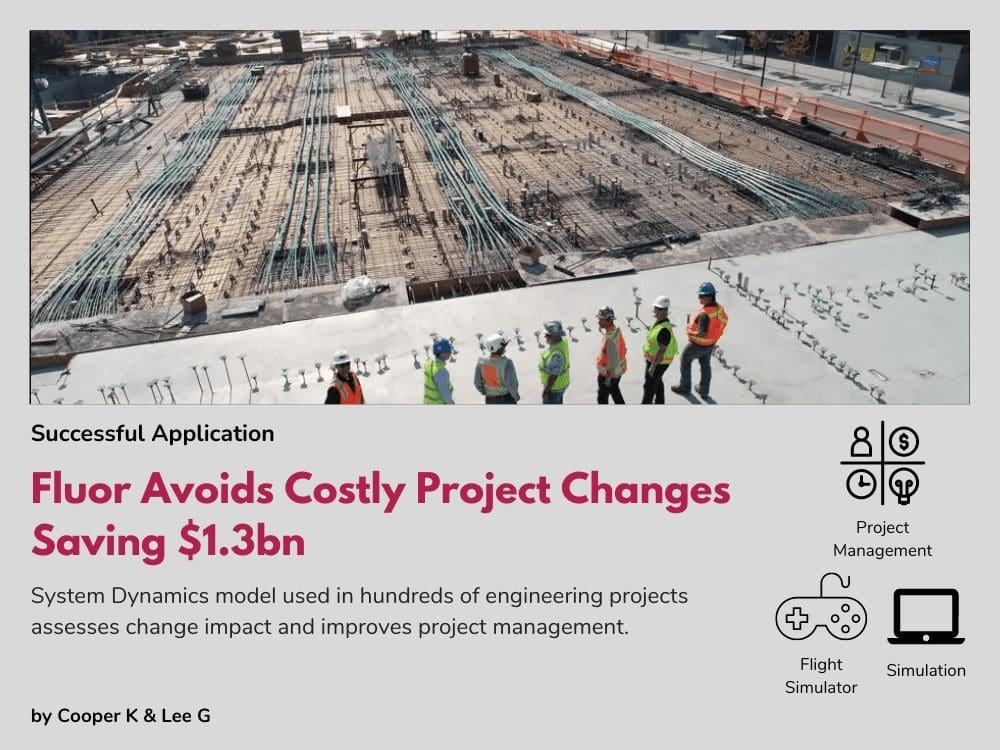Navigating Client Dissatisfaction
11 am NY | 3 pm London | 11 pm Beijing | Time Converter
Navigating Client Dissatisfaction
Every consultant has their share of success stories, but what happens when the client doesn’t like the analysis? Dive deep into the realities of professional consultancy where not every project ends with a fairy tale conclusion. In this session, Dennis Sherwood will share his personal journey of a decade-long engagement with a government client. Through this lens, he will shed light on the complexities and challenges faced when results don’t align with client expectations.
Join us to:
- Delve into the intricate dynamics of client relationships beyond conventional success narratives.
- Unpack strategies to manage, navigate, and turn around situations when clients are dissatisfied with the outcomes.
- Engage in an open forum to share your own experiences of when project outcomes diverged from client expectations.
About the Presenter
Dennis Sherwood has championed organizational innovation and creativity for over 20 years through his UK-based consultancy. A fervent advocate of systems thinking, Dennis’s vast experience ranges from being a consulting partner at Deloitte to holding pivotal roles at establishments like Goldman Sachs and SRI Consulting. An acclaimed author, Dennis has authored 15 books on topics spanning innovation, creativity, and systems thinking, with titles such as “Seeing the Forest for the Trees” and “How to Be Creative: A Practical Guide for the Mathematical Sciences.” Join us as Dennis unravels the nuances of client relationships, providing invaluable insights from his distinguished career.
Digital Twin Business Models for Strategy and Operational Management
11 am NY | 4 pm London | 12 am Beijing | Time Converter
Digital Twin Business Models for Strategy and Operational Management
In the business field, dynamic models have long been used for simulating long-term plans (3+ years) and medium-term challenges and issues playing out over a few months or quarters. But models have also been used to understand shorter-term phenomena, such as in supply-chain and service-delivery cases. Often, though, the same structures and mechanisms operate over both short and long-time scales. Examples include customer acquisition and retention, and staffing (hiring, promotion, and turnover), and performance-improvement programs. This webinar will show how a single model can capture both short-term and strategic views of the same issue, enabling management to have a coherent long-term plan and to check the impact of that plan on short-term tactical episodes. Taken to the extreme, this approach can get close to offering a “digital twin” of a business or some part of the business, that closely matches its actual performance as well as the development of the wider system that drives that performance. Similar considerations may well apply to plans and challenges in other domains. In this webinar, you will learn:
- The benefits of using System Dynamics to capture both short-term and long-term perspectives of a business issue.
- How to design and implement effective digital twin architectures that can improve organizational performance.
- Real-world examples and case studies of how System Dynamics and digital twins have been used to optimize business performance and drive competitive advantage.
About the Speakers
Fluor Avoids Costly Project Changes Saving $1.3bn
Fluor saves $1.3 billion in System Dynamics-based project management.
#United States #Engineering #Fluor #Corporation
CLIENT: FLUOR
Fluor is one of the world’s largest engineering and construction firms, with 2008 revenues over $20 billion. The US-based firm operates in every major business sector and geography.
CHALLENGE: CHANGES DON’T IMPROVE PROJECTS, QUITE THE OPPOSITE
A large part of Fluor’s work is organized in the form of projects, which are typically market-driven with aggressive cost and schedule targets and evolving client needs. It is the tension among these different objectives that is often the underlying dynamic for generating changes on projects. In an initiative by Fluor’s Chairman, a comprehensive quantitative review examined all Fluor projects over several years. For many in the industry, there is a misperception that contractors improve their performance with more changes. This company-wide review was unequivocal in refuting that notion. There is a clear, unambiguous relation between the level of changes and the cost and schedule performance of projects: more changes bring ever-worsening performance on projects.
ACTION: FLEXIBLE SYSTEM DYNAMICS MODEL TO PROJECT COST OF CHANGES
After Fluor had identified and quantified the business need for improving the practice of project change management, two external consultants first built and piloted and validated a project model to assess change impacts on several initial projects. In the four years since then, the model has been used in the “Change Impact Assessment” system to conduct thousands of analyses on over 100 client projects. Fluor projects analyzed with this model range in size from less than million to more than billion.
The system rapidly tailors a model to simulate each engineering and construction project. Each model is then used to foresee future cost and schedule impacts of project changes, and most important, test ways to avoid the impacts.
We developed a project model based on our prior modeling work with Fluor, and built a system around it, with defined practices to rapidly and automatically tailor the model to a specific project. We set up an interface to allow dozens of trained company users to test proactively project-wide impacts of proposed design or scope changes.
We conducted worldwide training of executives and managers and analysts, ensuring the focus was on foreseeing and mitigating future change impacts. The system was applied to hundreds of Fluor projects.
RESULTS: COST REDUCTION OF $1.3 BILLION
A cultural change occurred in the company, focused on proactive mitigating efforts that reduce change impacts on the projects.As a result, many disputes were avoided (some had cost tens of millions of dollars), and cost impacts were reduced by proactive actions identified in the analyses, amounting to over $1.3 billion savings to Fluor and their clients.
LEARN MORE
System Dynamics modelers: Kenneth Cooper and Gregory Lee
AWARDS & PUBLICATIONS
Award: In 2009, the Society awarded its System Dynamics Applications Award to Kenneth Cooper and Gregory Lee for their work Managing the Dynamics of Projects and Changes at Fluor. See conference slides and citation.
Article: Managing the Dynamics of Projects and Changes at Fluor
OTHER SUCCESSFUL APPLICATIONS
Fast-Track Cities Uses System Dynamics to Enhance HIV Care
Fast-Track Cities Uses System Dynamics to Enhance HIV Care EXECUTIVE Summary Low levels of viral suppression at 69% for people with HIV make it hard to believe the 95% target level will be achieved by 2030 in St. Louis, USA. As a solution, Fast-Track Cities-STL opted...
System Dynamics Unravels ICU Tensions at the Portuguese Oncology Institute
System Dynamics Unravels ICU Tensions at the Portuguese Oncology Institute EXECUTIVE Summary The Portuguese Oncology Institute (IPO) faced a critical challenge in its intensive care unit (ICU) where doctors and nurses experienced high turnover due to tensions with...
System Dynamics Helps Farmers Escape Poverty Trap in Guatemala
System Dynamics Helps Farmers Escape Poverty Trap in Guatemala EXECUTIVE Summary Guatemala holds the 4th highest global ranking for chronic malnutrition, and climate change is intensifying the challenges subsistence farmers face in providing food for their families....
Upcoming Events

MINDS Cast Ep. 5 – Expanding System Dynamics with Hybrid Modeling w/ Scott Fortmann
This talk discusses extensions to System Dynamics modeling to integrate other modeling methods, notably Agent-Based Modeling. We will explore techniques for Agent-Based Modeling and how to integrate them into System Dynamics models; we will see how to extend...
Recent Posts
From Bergen to Global: UiB’s System Dynamics Group
From Bergen to Global: UiB’s System Dynamics Group The System Dynamics Group, an autonomous research group at the University of Bergen (UiB) was established in 1971 by professor emeritus Svein Nordbotten. Inspired by the work of Jay W. Forrester, Nordbotten...
Consideo’s Insight into the Global Energy Transition: A Systems Perspective
Consideo’s Insight into the Global Energy Transition: A Systems Perspective Complexities of Energy TransitionThe global energy transition is a complex challenge. The development of technology, the need for resources, the depletion of high-grade materials and...
A Digital Twin Business Model in 40 Hours
A Digital Twin Business Model in 40 Hours Though long past the date when I should have ‘retired’, I just can’t resist interesting projects, like the one a new friend brought me a few weeks ago. It concerns a small but fast-growing B2B business,...
Join us
OTHER SUCCESSFUL APPLICATIONS
Fast-Track Cities Uses System Dynamics to Enhance HIV Care
Fast-Track Cities Uses System Dynamics to Enhance HIV Care EXECUTIVE Summary Low levels of viral suppression at 69% for people with HIV make it hard to believe the 95% target level will be achieved by 2030 in St. Louis, USA. As a solution, Fast-Track Cities-STL opted...
System Dynamics Unravels ICU Tensions at the Portuguese Oncology Institute
System Dynamics Unravels ICU Tensions at the Portuguese Oncology Institute EXECUTIVE Summary The Portuguese Oncology Institute (IPO) faced a critical challenge in its intensive care unit (ICU) where doctors and nurses experienced high turnover due to tensions with...
System Dynamics Helps Farmers Escape Poverty Trap in Guatemala
System Dynamics Helps Farmers Escape Poverty Trap in Guatemala EXECUTIVE Summary Guatemala holds the 4th highest global ranking for chronic malnutrition, and climate change is intensifying the challenges subsistence farmers face in providing food for their families....
Recent Posts
From Bergen to Global: UiB’s System Dynamics Group
From Bergen to Global: UiB’s System Dynamics Group The System Dynamics Group, an autonomous research group at the University of Bergen (UiB) was established in 1971 by professor emeritus Svein Nordbotten. Inspired by the work of Jay W. Forrester, Nordbotten...
Consideo’s Insight into the Global Energy Transition: A Systems Perspective
Consideo’s Insight into the Global Energy Transition: A Systems Perspective Complexities of Energy TransitionThe global energy transition is a complex challenge. The development of technology, the need for resources, the depletion of high-grade materials and...
A Digital Twin Business Model in 40 Hours
A Digital Twin Business Model in 40 Hours Though long past the date when I should have ‘retired’, I just can’t resist interesting projects, like the one a new friend brought me a few weeks ago. It concerns a small but fast-growing B2B business,...
Upcoming Events

MINDS Cast Ep. 5 – Expanding System Dynamics with Hybrid Modeling w/ Scott Fortmann
This talk discusses extensions to System Dynamics modeling to integrate other modeling methods, notably Agent-Based Modeling. We will explore techniques for Agent-Based Modeling and how to integrate them into System Dynamics models; we will see how to extend...




